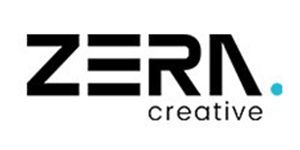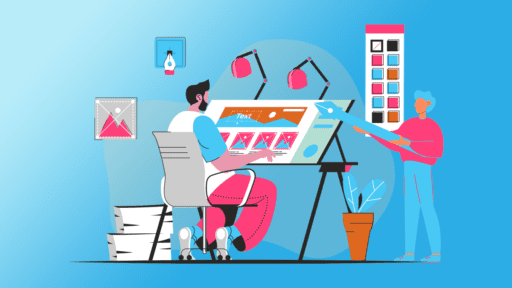The design world is constantly evolving, influenced by cultural shifts, technological advancements, and changing consumer preferences. As we transition into 2024 and beyond, designers need to stay ahead of the curve.
To help you navigate the ever-changing landscape of design, we’ve compiled a list of the top 12 design trends that are set to dominate in 2024.
Unveiling the Top 12 Design Trends of the Present & Future
Stay ahead of the curve as we delve into the creative landscape of tomorrow.
1. Sustainable Design Takes Center Stage
With increasing environmental concerns and a growing awareness of climate change, sustainability has become a paramount consideration in design. In 2023 and 2024, we can expect to see an even greater emphasis on sustainable design principles.
Eco-Friendly Materials: Designers will continue to explore and employ eco-friendly materials, such as recycled and upcycled materials, reclaimed wood, and sustainable textiles. These materials reduce the environmental impact of products and contribute to a unique and authentic aesthetic.
Biophilic Design: Biophilic design, which incorporates elements of nature into interior spaces, will gain popularity. Expect to see more indoor gardens, natural light optimization, and the use of natural textures and colors to create calming and rejuvenating environments.
Energy Efficiency: Energy-efficient design will extend beyond just architecture. Products and appliances will incorporate innovative energy-saving features, encouraging a more sustainable lifestyle.
2. Minimalist and Maximalist Fusion
The minimalist and maximalist design styles have been on opposing ends of the spectrum for years. However, in 2023 and 2024, we’ll witness a fusion of these two seemingly contradictory styles.
Maximalist Minimalism: Designers will combine the simplicity of minimalist design with the boldness of maximalist aesthetics. This trend will result in spaces that are both clean and uncluttered while featuring statement pieces, vibrant colors, and intricate patterns.
Mix and Match: Expect to see a mix of design elements from various eras and styles. Vintage pieces will be seamlessly integrated with modern furniture, creating visually stimulating and eclectic spaces.
Personalization: This fusion will allow for greater personalization. Homeowners can choose minimalist backgrounds and introduce maximalist elements through accessories, making adapting easier as tastes change.
3. Digital Nostalgia and Retro Futurism
As technology continues to shape our lives, there’s a growing fascination with nostalgia and the aesthetics of the past. Design trends in 2023 and 2024 will reflect this by blending elements of retro design with futuristic touches.
Retro Colors: Pastel color palettes, as well as bold and saturated hues reminiscent of the 1980s and 1990s, will be prevalent. These colors will be paired with metallic accents and high-gloss finishes for a futuristic twist.
Tech-Infused Decor: Vintage tech-inspired decor will become popular. Think retro-style TVs, cassette tape coffee tables, and digital-inspired art pieces.
Futuristic Architecture: Architectural designs will embrace retro-futurism, combining sleek lines and geometric shapes with a nod to space-age design elements.
4. Digital Craftsmanship and Augmented Reality (AR)
The integration of digital technology into design processes will continue to evolve in 2023 and 2024, offering new possibilities for both designers and consumers.
Digital Craftsmanship: Digital tools and 3D printing will enable designers to create intricate, custom-made pieces that were once impossible to produce by hand. This will lead to a resurgence of craftsmanship in the digital age.
Augmented Reality in Design: AR will play a significant role in design, allowing consumers to visualize products in their own spaces before making a purchase. This immersive experience will revolutionize interior design and online shopping.
Virtual Reality Showrooms: Virtual reality will be used to create immersive design showrooms and experiences, enabling customers to explore spaces and products from the comfort of their homes.
5. Emphasis on Wellness-Oriented Design
With a heightened focus on health and well-being, design trends in 2023 and 2024 will prioritize creating spaces that promote mental and physical wellness.
Holistic Spaces: Designs will incorporate elements that support mindfulness and relaxation, such as meditation corners, spa-like bathrooms, and dedicated exercise areas.
Natural Light Optimization: Maximizing natural light will be a key consideration, as it not only reduces the need for artificial lighting but also has a positive impact on mood and circadian rhythms.
Ergonomic Furniture: Comfortable, ergonomically designed furniture will be in high demand. This trend will extend beyond office spaces to include all areas of the home.
6. Cultural Fusion and Global Influences
In an increasingly interconnected world, design will draw inspiration from diverse cultures and traditions, resulting in spaces that reflect a rich tapestry of global influences.
Ethnic Patterns and Textiles: Expect to see an influx of ethnic patterns, textiles, and art pieces from around the world. These elements will add depth and character to spaces.
Cultural Symbolism: Incorporating cultural symbols and artifacts will not only add aesthetic interest but also foster a sense of inclusivity and appreciation for different cultures.
International Color Palettes: Designers will explore color palettes inspired by different regions, offering a fresh take on traditional color theory.
7. Multi-Functional Furniture and Modular Design
As living spaces continue to shrink in urban environments, multi-functional furniture and modular design concepts will play a crucial role in maximizing space and functionality.
Transformative Furniture: Pieces that can adapt to different uses, such as sofa beds, extendable tables, and storage-integrated furniture, will become increasingly popular.
Space-Saving Solutions: Designers will prioritize creating innovative storage solutions that blend seamlessly with the overall design, allowing for clutter-free living.
Customizable Configurations: Modular designs will give homeowners the flexibility to rearrange and customize their spaces based on their evolving needs and preferences.
8. Artisanal and Handcrafted Elements
In a world saturated with mass-produced goods, there is a growing appreciation for handcrafted, one-of-a-kind pieces that tell a story and bring a sense of authenticity to spaces.
Handwoven Textiles and Carpets: Artisanal textiles and handwoven carpets will be used to add warmth and texture, showcasing the skill and craftsmanship of artisans.
Handmade Pottery and Ceramics: These unique pieces will serve as functional art, adding character and individuality to interior spaces.
Custom Woodwork and Metalwork: Custom-made furniture and fixtures crafted by skilled artisans will be sought after for their quality and personalized touch.
9. Dark and Moody Interiors
While light and airy interiors have been popular in recent years, 2023 and 2024 will see a resurgence of dark and moody design aesthetics.
Rich Color Palettes: Deep, saturated colors like forest green, navy blue, and charcoal gray will dominate interior spaces, creating a sense of coziness and drama.
Luxurious Materials: To complement the dark color schemes, designers will incorporate luxurious materials like velvet, silk, and dark wood finishes, adding depth and texture to rooms.
Statement Lighting: Dramatic, oversized lighting fixtures will serve as focal points, casting warm, inviting glows in these intimate settings.
10. Tech-Integrated Smart Homes
As technology continues to advance, smart home integration will become more seamless and integral to design in 2023 and 2024.
Voice Control: Voice-activated smart home systems will be seamlessly integrated into lighting, climate control, and entertainment systems, making homes more efficient and user-friendly.
Invisible Tech: Designers will focus on hiding or camouflaging tech components within the design, ensuring that functionality does not compromise aesthetics.
Customization: Homeowners will have more options for customizing their smart home setups, allowing for personalized experiences tailored to individual needs and preferences.
11. The Juxtaposition of Old and New (Neo-Vintage)
A trend known as “neo-vintage” will gain traction, which involves blending vintage and contemporary elements in surprising and harmonious ways.
Antique Meets Modern: This trend involves mixing antique or vintage furniture and decor with sleek, modern pieces, creating visually captivating contrasts.
Repurposed and Upcycled: Designers will repurpose and upcycle vintage items to give them new life and purpose, adding character and sustainability to spaces.
Eclectic Elegance: Neo-vintage spaces will exude a sense of elegance and timelessness, striking a balance between the charm of the past and the innovation of the present.
12. Virtual and Augmented Reality Art
The art world will also experience a transformation in 2023 and 2024, as virtual and augmented reality (VR/AR) art gains prominence.
Immersive Art Installations: Artists will create immersive, interactive art installations that can be experienced through VR headsets or AR apps, blurring the lines between physical and digital art.
Digital Collectibles: The concept of digital art collectibles, known as NFTs (Non-Fungible Tokens), will continue to evolve, allowing collectors to own and display digital artworks.
Mixed-Media Art: Artists will experiment with combining traditional art forms with digital elements, resulting in dynamic and evolving works of art.
Conclusion
In the ever-evolving world of design, 2023 and 2024 promise to be years of remarkable creativity and innovation. In these dynamic times, designers and enthusiasts alike have the opportunity to explore a rich tapestry of design trends, embracing sustainability, individuality, and the seamless integration of technology.
As we step into 2023 and 2024, the world of design beckons us to embrace creativity, embrace change, and create spaces that reflect our evolving needs and desires.
FAQs
Q: What Are the Emerging Ethical Considerations in Graphic Design for 2023 and Beyond?
In 2024 and beyond, graphic designers are increasingly grappling with ethical concerns. These include issues like the responsible use of AI in design, cultural appropriation, and promoting diversity and inclusivity in visuals. Designers are also exploring sustainable and eco-friendly design practices to minimize their environmental impact.
Q: What is the role of psychology in graphic design?
Graphic designers often use principles of psychology to influence how viewers perceive and interact with their designs. Understanding concepts like color psychology, visual hierarchy, and cognitive load can help designers create more effective and impactful visuals.
Q: How Are Augmented Reality (AR) and Virtual Reality (VR) Impacting Graphic Design Trends in 2023 and 2024?
AR and VR are revolutionizing graphic design by introducing immersive and interactive elements. Designers are creating 3D graphics and animations for AR/VR applications, enhancing user experiences, and pushing the boundaries of storytelling. Expect to see more AR/VR-driven design solutions in marketing, education, and entertainment.
Q: How do I balance creativity and client preferences in graphic design?
Striking a balance between your creative vision and a client’s specific requirements can be challenging. Effective communication and collaboration are key. It’s about finding creative solutions that meet the client’s goals while maintaining your design integrity.
Q: What’s the Role of NFTs (Non-Fungible Tokens) in the Graphic Design Industry in 2023 and 2024?
NFTs have gained significant attention in the creative world. Graphic designers are exploring NFTs to sell their digital artwork as collectibles. This technology allows for the creation of unique, verifiable digital assets, potentially changing how designers monetize their work and collaborate with clients.







